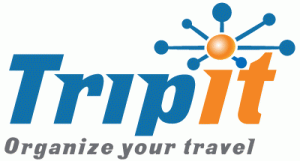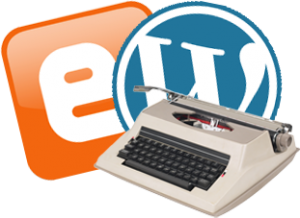 Are you a TV addict? Want to find out what you missed in a TV show or the status of a TV show? Though tv.com was bought by CBS, it retains its neutrality and reports information about more TV shows than you ever knew were on the air (or were). It is the IMDB of TV…with character. Continue reading TV Addicts database: TV.com
Are you a TV addict? Want to find out what you missed in a TV show or the status of a TV show? Though tv.com was bought by CBS, it retains its neutrality and reports information about more TV shows than you ever knew were on the air (or were). It is the IMDB of TV…with character. Continue reading TV Addicts database: TV.com
Tips for TripIt to Manage Your Travel Details with No-effort!
 TripIt is an almost magical web service (with mobile apps available) that keeps your travel itinerary organized for you, automatically. If you travel, even a moderate amount, TripIt takes the load off your mind, secure in knowing that you have all the information you need while you travel. Here are some tips for using TripIt to consolidate all your important travel information with zero-effort!
TripIt is an almost magical web service (with mobile apps available) that keeps your travel itinerary organized for you, automatically. If you travel, even a moderate amount, TripIt takes the load off your mind, secure in knowing that you have all the information you need while you travel. Here are some tips for using TripIt to consolidate all your important travel information with zero-effort!
TripIt basically does two things:
- Accepts travel confirmation emails and
- Build a detailed itinerary calendar
That is, you forward the travel confirmation emails from airlines, hotels, rental cars, etc. and TripIt builds an itinerary and maintains a personal calendar that contain all the relevant travel information from those emails.
This can be done without paying for TripIt. It has other features and TripIt Pro has even more features that maybe useful for frequent super-travelers.
No-Maintenance Usage Tips
To make TripIt into a no-maintenance tool, you should do the following: Continue reading Tips for TripIt to Manage Your Travel Details with No-effort!
Be a Little More Dashing in Your Text Communiqués
Again, I am off on a tangent. This is actually a tangent of a tangent (so I am way off course!). If you care about typefaces and the look of your text communications on your computers and smart-phones, as I do, then you probably feel constrained by the limited typewriter character set in your electronic communication. Finding the exact character to look and act like you want can distinguish and beautify your communiqués. It turns out that things have evolved a bit since the typewriter days and, though keyboards doesn’t show this, there are a bunch of other standard characters that are available; double-quotes (“ and ” vs.
"), single-quotes (‘ and ’ vs. '), ellipsis (… vs. ... —which saves also save you two characters in limited-length messages such as tweets and text-messages), and the topic of today’s post, dashes: hyphens (-), en-dashes (–), and em-dashes (—). I simply want to be able to enter these characters to make my messages look better, without a lot of tedium.
As tangents go, this led to more tangents; but here, I will try to distill these meanderings to something digestible and useful. So, first, a little about dashes then some howtos to enter the one you want on computers, tablets, and smart-phones you’re using
Dash, Dashes, and More Dashes
It turns out that dash/hyphen, en-, and em-dashes not only look different, they have different meanings. Reading through the Wikipedia’s “Dashes” entry reminds me of one of my peeves: when composing a document’s formatting, apply semantic formatting independent of how you want it to look (and address the look of the elements separately)—do not format content based on how you want it to look. (But I digress again…). Continue reading Be a Little More Dashing in Your Text Communiqués
Where to Blog? Consolidate!
 In this blogging age (well, I might be a late bloomer) I have long anguished over where to keep my journal of the random thoughts that I have spread across several blogs. There are two conflicting issues that has driven my anguish:
In this blogging age (well, I might be a late bloomer) I have long anguished over where to keep my journal of the random thoughts that I have spread across several blogs. There are two conflicting issues that has driven my anguish:
- If anyone is following me on any of my blogs, then I do not want bore them with too much off-topic content.
- It is a pain to remember where to post what.
But, it turns out that I don’t blog consistently on any one topic—I’m kind of A.D.D. that way—and I don’t think anyone but my mom is reading this, anyway. I blog as an outlet to practice writing (your redlines happily accepted); with the practical side-effect of using the cloud to back up my memories. So, I have decided to consolidate. My future ramblings involving my sphere of interests will all happen here (except the startup/entrepreneurship and programming topics that I post on Cache Crew blog). Since I am using WordPress (blogging software), I can organize my interests by category and use tags to index postings. We will see how well this allows me keep the content organized, easy to follow, and simple to find. I plan to move the content from all my other personal blogs here as well, so I can find them all in one place. Continue reading Where to Blog? Consolidate!
“Unhack” Your Facebook Account
If you are lounging around at a café, Facebooking using their public wifi, note that a hacker with the right software can grab your login information and do you the favor of Facebooking for you, without your help. Realistically, his kind of hack is not very prolific, but it is easy to block, so it’s better to be safe than sorry. Since Facebook makes this simple setting unduly difficult, the following is a quick step-by-step (as of July 4, 2011).
- Go to the “Account” drop-down menu in the upper right of your Facebook page.
 Continue reading “Unhack” Your Facebook Account
Continue reading “Unhack” Your Facebook Account
Gmail “Anonymizer”: Using Gmail without others knowing about it
![]() Free email is always popular. With Gmail having been out for a while and all those nifty Google services which require a Gmail ID as a prerequisite, Gmail is more popular than ever. Coupled with that, its great Spam filtering and it’s no wonder why so many people use it. Even if you have your own domain or other email mailbox, the Spam protection alone might be a reason to switch to Gmail. Other reasons: almost unlimited mailbox size, fast searching of all your email, a single place to organize all your email, a single view to your mail organization from any email client (via IMAP), and versatile mail management via labels.
Free email is always popular. With Gmail having been out for a while and all those nifty Google services which require a Gmail ID as a prerequisite, Gmail is more popular than ever. Coupled with that, its great Spam filtering and it’s no wonder why so many people use it. Even if you have your own domain or other email mailbox, the Spam protection alone might be a reason to switch to Gmail. Other reasons: almost unlimited mailbox size, fast searching of all your email, a single place to organize all your email, a single view to your mail organization from any email client (via IMAP), and versatile mail management via labels.
So, if you are going to use Gmail, here’s some advice on how to use it right. Continue reading Gmail “Anonymizer”: Using Gmail without others knowing about it
Lost Windows’ Password? Simple, Just Delete It
Having one of those “senior moments” and forgotten the Windows login password you’d set? Or maybe you had to restart that old Windows machine and don’t remember the password that you’d used. Whatever the reason, it turns out to be amazingly simple to clear your password to gain access to your Windows machine. Once you regain access to your account, you can re-establish a new password (or the same one, if you can remember what it was).
Continue reading Lost Windows’ Password? Simple, Just Delete It
Protect Home Networks from Bad Websites
Here is a quick way to configure your home network to filter access to all those bad websites. This can help to keep inadvertent clicks to mal-ware websites from causing havoc with machines connected to your network—even the machines that belong to guest that are just visiting. At the same time, you can filter access to websites that some in the household should not be visiting.
Here is the short story: set the router that connects your home network to the internet so that its DNS primary and secondary IP addresses to 208.67.222.222 and 208.67.220.220. Continue reading Protect Home Networks from Bad Websites
Retrieving from Old Backups (.bkf) with Windows 7
Okay, I know you have never used the Windows backup tool in Windows versions prior to Windows 7, so this article is not of any use to you. Windows 7 uses an entirely new scheme for storing backups and, out of the box, is not able to read the older backup files. (This might apply to Windows Vista, as well).
Just like VHS tapes and floppy diskettes, backup files that were created with prior versions of Windows are going by the wayside and are not usable, by default, under Windows 7. Fortunately, Microsoft has made a utility available for Windows 7 that can retrieve files from those old backup-files. First, you will need to get Microsoft’s program from Windows NT Backup Restore Utility for Windows 7. Continue reading Retrieving from Old Backups (.bkf) with Windows 7
VMware: Running Your Apps Safely in a Virtual Environment
As a software/techy/geek, I love VMware Workstation for Windows (and Linux and Fusion for OSX). These products allow an operating system to run within the context of the operating system—a computer within a computer, so to speak. This allows a single machine to be used to run any applications without having to to use multiple machines, dual-boot, or reinstall applications. Continue reading VMware: Running Your Apps Safely in a Virtual Environment